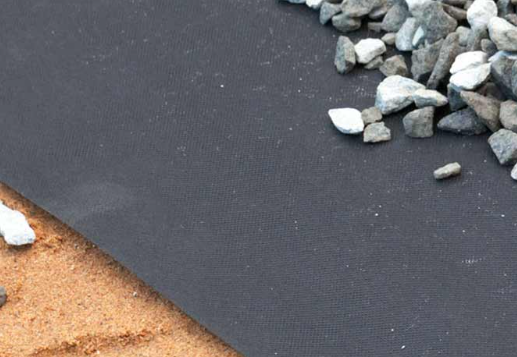- Understanding the Role of Geomembrane Liners in Waste Management
- Innovations in Geomembrane Liners for Water Management
- Geomembrane Liners: A Comprehensive Guide
- The Future of Geomembrane Liners in Civil Engineering
- Geomembrane Liners: Enhancing Landfill Stability
Manager:
WhatsApp:+86 177 0135 2670
Tel:+86 177 0135 2670
Email:marketing@okorder.com
Address:3rd Floor, No.2 Building, No.1 Sanlihe Road
Is geotextile a root barrier?
Geotextiles have become important elements in contemporary construction and landscaping projects with the range of their usefulness from erosion control to soil stabilization. One of the most common questions in this area is whether geotextiles can act as root barriers effectively. This paper is designed to go through the properties and applications of different kinds of geotextile such as plastic geogrid, wholesale geogrid, fiberglass geogrid, and glassfiber geogrid in order to establish whether they are compatible enough if used as root barriers.

Knowing about Geotextiles
Geotextiles are permeable fabrics used in civil engineering and environmental applications. They made from synthetic fibers and have varied characteristics including strength, permeability, stiffness among others. For these reasons, they lend themselves to many applications such as filtration, drainage, reinforcement and separation.
Plastic Geogrid: Reinforcement Solution
Soil reinforcement is the main use for plastic geogrids which are engineered polymer grids. High tensile strength and resistance to UV radiation along with degradation by chemicals characterize these grids that consist typically high-density polythene (HDPE) or polypropylene (PP).
In construction works, plastic geogrids are usually fixed beneath pavements or soils in order to enhance load sharing capacity while preventing soil drifting. Their open lattice configuration promotes interlocking well with soil grains thereby enhancing firmness while reducing susceptibility towards erosion.
However, when considering them for application such as root barriers some plastic types may prove less effective than others due factors like grid opening size or depth of installation since roots could easily pass through these openings thus losing their purpose as independent root barriers.
Wholesale Geogrid: A Means Of Meeting Diverse Project Needs
Wholesale Geogrids represents a variety of bulk purchase options including plastics fiberglass and glassfiber types among other types available in the market today. Such geogrids are sourced from various manufacturers and suppliers globally to serve the needs that construction and civil engineering projects across the globe may have.
Root barrier applications should, however, take cognisance of specific project requirements such as soil type, types of roots as well as installation procedures when considering wholesale geogrid alternatives. While some wholesale geogrids can function efficiently as root barriers others need additional reinforcement or supplementary materials for them to work effectively.
Fiberglass Geogrid: Strength Combined With Flexibility
Fiberglass geogrids are composite materials composed of glass fiber strands coated with polymer resins. Thus, this material combination results in a very light but tough fabric possessing excellent tensile strength as well as dimensional stability.
When it comes to civil engineering applications, fiberglass geogrids are often used in relation to soil stabilization, slope reinforcement and pavement strengthening among others. Owing to their high modulus of elasticity and resistance to creep they find use where long term performance is crucial.
However, fiberglass geogrids may be considered for root barriers since they vary considerably with respect to their permeability and root penetration characteristics respectively. Although these grids aid against soil movement efficiently yet not providing the same level of protection against roots equivalent specialized fabrics designed particularly for this purpose would do.
Glassfiber Geogrid: A Sustainable Solution
Glassfiber geogrids are engineered geosynthetics which consist of glass fibers covered with polymers. They exhibit high tensile strengths coupled with dimensional stability besides being resistant to environmental deterioration hence suitable options in different civil engineering scenarios.
In addition to their mechanical properties, glassfiber geogrids are also valued for their sustainability. Glass fibers originate from silica sand; an abundant natural resource which can be recycled upon completion of its lifetime thereby lowering its impact on the environment.
While considering glassfiber geo grids to act as root barriers, it is vital to evaluate their compatibility with the neighboring soil and vegetation. Although they can provide effective reinforcement and stabilization, the use of glassfiber geo grids as solo root barriers may hinge on factors like the type of soil, root density, or depth of installation.

CONCLUSION
Finally though geotextiles such as plastic geogrids, wholesale geogrids, fiberglass geogrids and glassfiber geogrids have some valuable attributes for soil reinforcement and stabilization their effectiveness as root barriers varies. The materials used in making them vary from one another but having them installed in a similar manner is necessary for proper performance on any given project depending on the intended application. In addition, integration of complementary materials or methods might increase effectiveness of geomembrane root barrier systems which may last for long periods during construction or landscape projects with similarly lasting solutions.”
-
2024-06-12Asphalt fiberglass geogrid construction plan
-
2024-06-04Asphalt fiberglass geogrid construction plan
-
2024-05-21What is the disadvantage of geogrid?
-
2024-05-21What is the lifespan of geogrid?
-
2024-05-21What are the 3 main uses of a geotextile?






